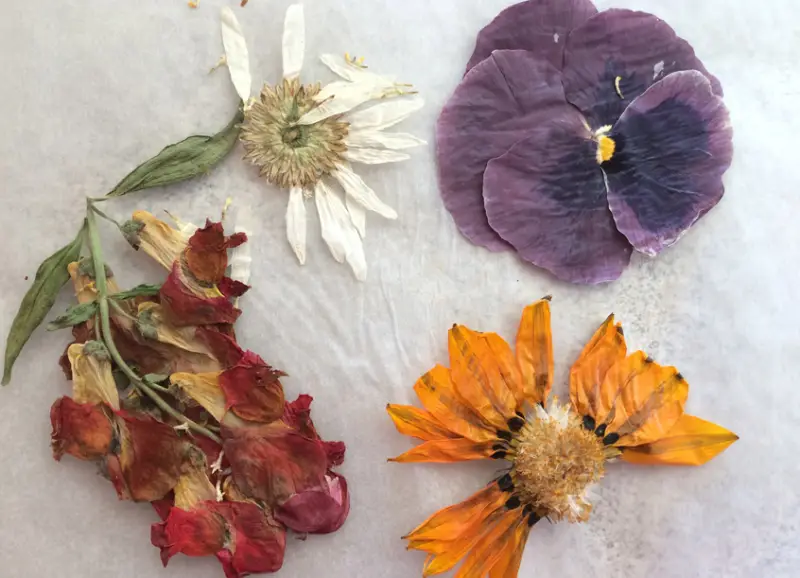Pressing flowers is a beautiful and timeless way to preserve nature’s delicate beauty. Whether you want to create art, decorate greeting cards, or keep cherished memories alive, learning the right techniques is essential.
In this guide, we’ll cover everything you need to know about pressing flowers, including the best methods, helpful tips, and common mistakes to avoid.
Why Press Flowers?

Pressing flowers is more than just a fun and creative activity—it offers numerous benefits, both sentimental and practical. One of the most cherished reasons is the ability to preserve meaningful flowers. Whether it’s a wedding bouquet, a flower from a first date, or a thoughtful gift from a loved one, pressing flowers helps retain their beauty and keeps memories alive for years.
Beyond sentimental value, pressed flowers serve as a versatile material for various artistic projects. They can be used to embellish scrapbooks, handmade greeting cards, bookmarks, and even resin crafts, adding a unique and natural touch to personalized creations. Additionally, pressed flowers can be framed and displayed as decorative art, capturing the beauty of nature in a timeless way.
Another compelling reason to press flowers is sustainability. Unlike fresh-cut flowers that wither quickly, pressed flowers offer a way to enjoy nature’s beauty year-round without frequent replacements. This makes them an eco-friendly alternative for floral decorations, reducing waste while maintaining an elegant aesthetic.
Pressing flowers also provides an educational experience for both children and botanical enthusiasts. It encourages observation, patience, and an appreciation for plant structures. For kids, it can be an exciting way to learn about different flower species, while for gardeners and hobbyists, it offers a method of preserving favorite blooms for reference and study.
Best Flowers for Pressing
Not all flowers are suitable for pressing, as some retain too much moisture or lose their color during the drying process. The best flowers for pressing are those with flat petals and lower water content, as they dry more evenly and maintain their shape.
Among the easiest and most reliable flowers to press are pansies. With their thin petals and vibrant colors, they retain their beauty exceptionally well. Daisies are another great option due to their classic shape and ability to press flat without losing detail.
Lavender is highly favored not just for its elegant appearance but also for its ability to retain its soothing scent, making it perfect for aromatherapy crafts. Fern leaves, though not flowers, add an exquisite texture to pressed flower arrangements, enhancing the overall composition. Rose petals, while challenging to press as whole flowers, work wonderfully when separated, preserving their delicate texture and rich hues.
On the other hand, certain flowers do not press well. Thick flowers, such as succulents, contain too much moisture, making them prone to mold and rot. Similarly, flowers with high water content, like tulips and lilies, often struggle to dry properly, resulting in a wilted or discolored appearance. Dark-colored flowers, while striking when fresh, tend to fade or turn brown during the pressing process, losing much of their original vibrancy.
Methods for Pressing Flowers
There are several ways to press flowers, depending on the materials available and how quickly the results are needed. Each method offers unique advantages, whether it’s preserving the flower’s delicate details, speeding up the process, or using simple household items.
Traditional Book Pressing Method
This is the most accessible and commonly used method, requiring only a heavy book and a little patience. To begin, place the flower between two sheets of parchment paper or blotting paper to absorb moisture. Carefully insert this setup inside a large book, ensuring the flower lays flat. A thick dictionary or encyclopedia works well for this purpose.
Once the book is closed, add extra weight on top, such as additional books or a heavy object, to apply even pressure. Leave it undisturbed for about two to four weeks. During this time, the flower will gradually lose its moisture and flatten. After a few weeks, check if the flower is fully dried and preserved. If it still feels slightly damp, leave it for a bit longer.
This method is ideal for those who appreciate a slow, natural drying process and do not require immediate results.
Flower Press Method
A flower press is a specialized tool designed to provide more uniform pressure, making it a great option for those who press flowers regularly. It typically consists of two wooden boards tightened together with screws, allowing better control over the pressure applied to the flowers.
To use a flower press, arrange the flowers between sheets of blotting paper and layer them with pieces of cardboard for added absorption. Once everything is in place, tighten the screws evenly to ensure consistent pressure. The flowers should be left inside the press for one to three weeks, with occasional checks to monitor the drying progress.
A DIY version of a flower press can be made using two pieces of plywood, screws, and wingnuts to mimic the same effect. This method results in high-quality pressed flowers with well-preserved colors and details.
Microwave Flower Pressing
For those who need quick results, microwave pressing is an efficient alternative. This method rapidly removes moisture while preserving much of the flower’s shape and color. A microwave-safe flower press is ideal, but if one is not available, two ceramic tiles secured with rubber bands can serve as a makeshift alternative.
To start, place the flowers between two sheets of blotting paper inside the press or between the tiles. Microwave in short bursts of 30 seconds, checking the flowers after each interval to prevent overheating. The total drying process usually takes about one to two minutes, depending on the flower’s thickness and moisture content.
Once the flowers appear dry, let them cool completely before removing them from the press. This method is perfect for craft projects that require pressed flowers in a short amount of time.
Iron Pressing Method
Another quick method involves using a household iron to apply heat and remove moisture. This technique works well for small projects and when a microwave or flower press is unavailable.
To begin, place the flower between two sheets of parchment paper to protect it from direct heat. Set the iron to a low temperature and ensure that the steam function is turned off. Gently press the iron over the parchment paper for about 10 to 15 seconds, then lift it and allow the flower to cool for a moment before repeating the process.
Continue applying heat in short intervals until the flower is fully dried. This method is effective for pressing flowers quickly while still achieving a relatively natural appearance. However, it requires careful attention to prevent overheating, which can cause the flower to become brittle or discolored.
Each of these methods offers a unique approach to pressing flowers, allowing for flexibility based on the time available and the materials at hand. Whether using the traditional book method for a slow, natural process or opting for microwave or iron pressing for faster results, preserving flowers can be both a rewarding and creative endeavor.
Tips for Perfectly Pressed Flowers
Achieving beautifully pressed flowers requires attention to detail and the right techniques. From selecting the best flowers to ensuring even drying, following these tips will help preserve their delicate beauty while maintaining vibrant colors and fine details.
Choose Fresh Flowers at Their Peak
For the best results, always use flowers that are freshly picked and at their peak bloom. Flowers that are already wilted or overly mature tend to lose their structure and may not press well. The fresher the flower, the better it will retain its natural shape and color during the pressing process. If possible, pick flowers in the morning after the dew has evaporated, as this helps reduce excess moisture.
Use Proper Drying Materials
The materials used for pressing play a crucial role in absorbing moisture and preventing mold. Blotting paper, parchment paper, or even coffee filters work well to draw out excess water while keeping the flower’s details intact. Avoid using glossy magazine pages or wax paper, as they do not absorb moisture effectively and may cause flowers to retain too much water, leading to decay. When layering flowers for pressing, always ensure they are placed between absorbent sheets to facilitate even drying.
Apply Even Pressure
Consistent pressure is key to achieving a well-pressed flower. Uneven weight distribution can cause some parts of the flower to dry faster than others, leading to curling or distortion. Whether using a book, a flower press, or another pressing method, make sure the pressure is evenly applied across the entire surface. If using the traditional book method, adding additional heavy books or weights on top helps maintain steady pressure throughout the process.
Label and Organize Your Flowers
When pressing multiple flowers at once, labeling them with their names and the date they were pressed can be incredibly helpful. This is especially useful for those working on botanical collections or craft projects requiring different types of flowers. Keeping track of drying progress ensures that flowers are removed at the right time before they become too brittle. If pressing a variety of flowers, organizing them in separate layers prevents overlapping, which can affect their final appearance.
Common Mistakes to Avoid
Even with careful preparation, pressing flowers can sometimes lead to disappointing results. Understanding common mistakes and how to avoid them ensures beautifully preserved flowers that maintain their color, shape, and delicate details.
Using Flowers with High Moisture Content
One of the biggest challenges in flower pressing is dealing with flowers that contain too much water. Thick-petaled flowers, such as lilies and tulips, or flowers with fleshy textures, like succulents, tend to retain moisture, making them difficult to dry properly. Excess water increases the risk of mold growth and can cause the flowers to become discolored or decay during the pressing process. If pressing flowers with higher moisture content, consider splitting them into thinner sections or choosing individual petals instead of whole blooms.
Not Changing Paper Regularly
For those using the book pressing method, neglecting to change the blotting paper can result in uneven drying and mold development. Since flowers release moisture as they are pressed, the paper absorbs this moisture over time. If not replaced, the damp environment can lead to decay and staining. To prevent this, replace the blotting paper every few days, especially in the first week, to ensure a proper drying process.
Pressing Flowers Too Quickly
While faster methods like ironing or microwave pressing are convenient, applying too much heat too quickly can damage flowers rather than preserve them. High temperatures can cause delicate petals to scorch, turn brown, or become overly brittle. To prevent this, use a gentle approach when applying heat. For ironing, always set the temperature to low and avoid direct contact with the flowers by placing them between parchment paper. If using a microwave, heat the flowers in short intervals to avoid overheating.
Overlapping Flowers During Pressing
Spacing flowers correctly is crucial to ensure they dry evenly. Overlapping flowers or placing them too close together can result in uneven pressure, causing some areas to retain more moisture than others. This can lead to incomplete drying, curling, or even mold. To avoid this, arrange flowers in a single layer with space between them, allowing air to circulate and promoting uniform drying. If pressing multiple flowers at once, use separate layers of blotting paper to keep them from touching.
Not Checking on Flowers During the Drying Process
Although patience is necessary for flower pressing, leaving flowers unattended for too long without checking can lead to unexpected issues. Flowers may stick to the paper, develop mold, or lose their color if left unchecked. While book and press methods require several weeks, it’s helpful to periodically inspect the flowers to ensure they are drying properly. If signs of moisture buildup or mold appear, replace the blotting paper or adjust the pressing technique accordingly.
Creative Ways to Use Pressed Flowers
Once you’ve mastered the art of pressing flowers, there are endless ways to incorporate them into creative projects. These delicate blooms can be used for artistic decorations, personalized gifts, and even functional items that bring a natural touch to everyday life.
Framed Wall Art
Pressed flowers make beautiful, timeless wall art that captures nature’s beauty in a unique way. To create framed flower art, arrange pressed blooms on a piece of high-quality paper or fabric, experimenting with different compositions to achieve an aesthetically pleasing design. Once satisfied with the layout, secure the flowers in place using a thin layer of adhesive or double-sided tape. Placing them between glass panels or in a shadow box frame enhances their delicate appearance while protecting them from dust and damage. Framed pressed flowers can be a stunning addition to home décor or a thoughtful handmade gift.
Handmade Greeting Cards
Adding pressed flowers to greeting cards is a charming way to personalize messages for special occasions. Whether for birthdays, weddings, or anniversaries, pressed flowers bring elegance and warmth to any card. To create a handmade card, start with a sturdy cardstock base and carefully arrange the flowers before securing them with glue or transparent adhesive film. For a minimalist look, a single pressed bloom can serve as the focal point, while intricate floral arrangements add a more artistic flair. Handwritten messages alongside the flowers enhance the sentimental value of the card.
Resin Jewelry and Accessories
Encapsulating pressed flowers in resin transforms them into exquisite jewelry and accessories that preserve their beauty for years. Flowers like daisies, baby’s breath, and small petals work particularly well for this craft. To create resin jewelry, arrange pressed flowers in a mold for pendants, earrings, or rings, then carefully pour clear resin over them. Once the resin hardens, the result is a durable, glossy piece of wearable art. Pressed flowers can also be embedded in resin keychains, phone case decorations, or even hair accessories for a unique, nature-inspired look.
Personalized Bookmarks
Pressed flowers make elegant and functional bookmarks, perfect for book lovers who appreciate floral beauty. To create a bookmark, arrange pressed flowers on a rectangular strip of thick paper or cardstock. Once satisfied with the design, laminate the bookmark or encase it in a self-adhesive plastic cover to protect the flowers from damage. Adding a tassel or ribbon can give the bookmark an extra decorative touch. These floral bookmarks make great gifts or personal keepsakes that combine practicality with artistic charm.
Candles and Home Décor
Pressed flowers can be incorporated into home décor in various ways, including candles, coasters, and scrapbooks. For candle decoration, pressed flowers can be applied to the outside of a plain wax candle using melted wax as an adhesive, creating a stunning floral effect. Coasters with embedded pressed flowers, either laminated or set in resin, add a touch of nature to any table setting. Additionally, pressed flowers can enhance scrapbook pages, photo albums, or journal covers, preserving both memories and botanical beauty in a creative way.
With a little creativity, pressed flowers can be transformed into stunning art pieces and functional accessories that bring natural beauty into everyday life. Whether displayed in a frame, used in handmade crafts, or embedded in resin, these preserved blooms offer endless possibilities for artistic expression.
Conclusion
Pressing flowers is a rewarding and artistic way to preserve nature’s beauty. By using the right techniques, avoiding common mistakes, and getting creative with your projects, you can enjoy beautifully preserved flowers for years to come. Whether you prefer traditional book pressing or modern microwave methods, this guide provides everything you need to start pressing flowers like a pro!
Start experimenting today, and let the beauty of nature inspire your creativity!






